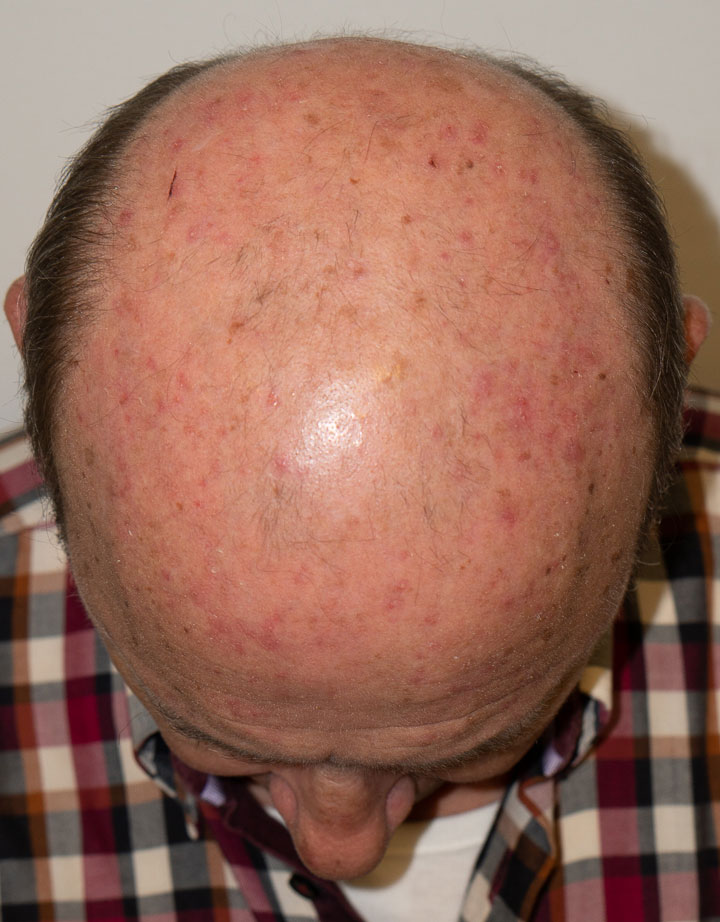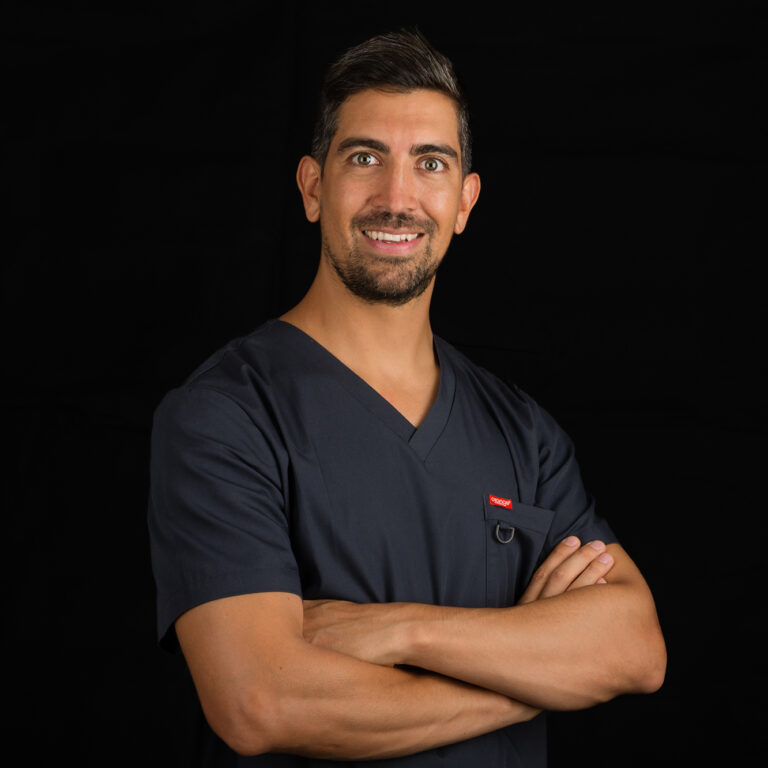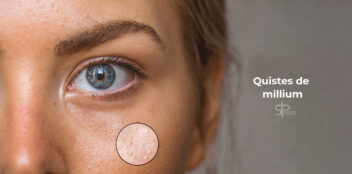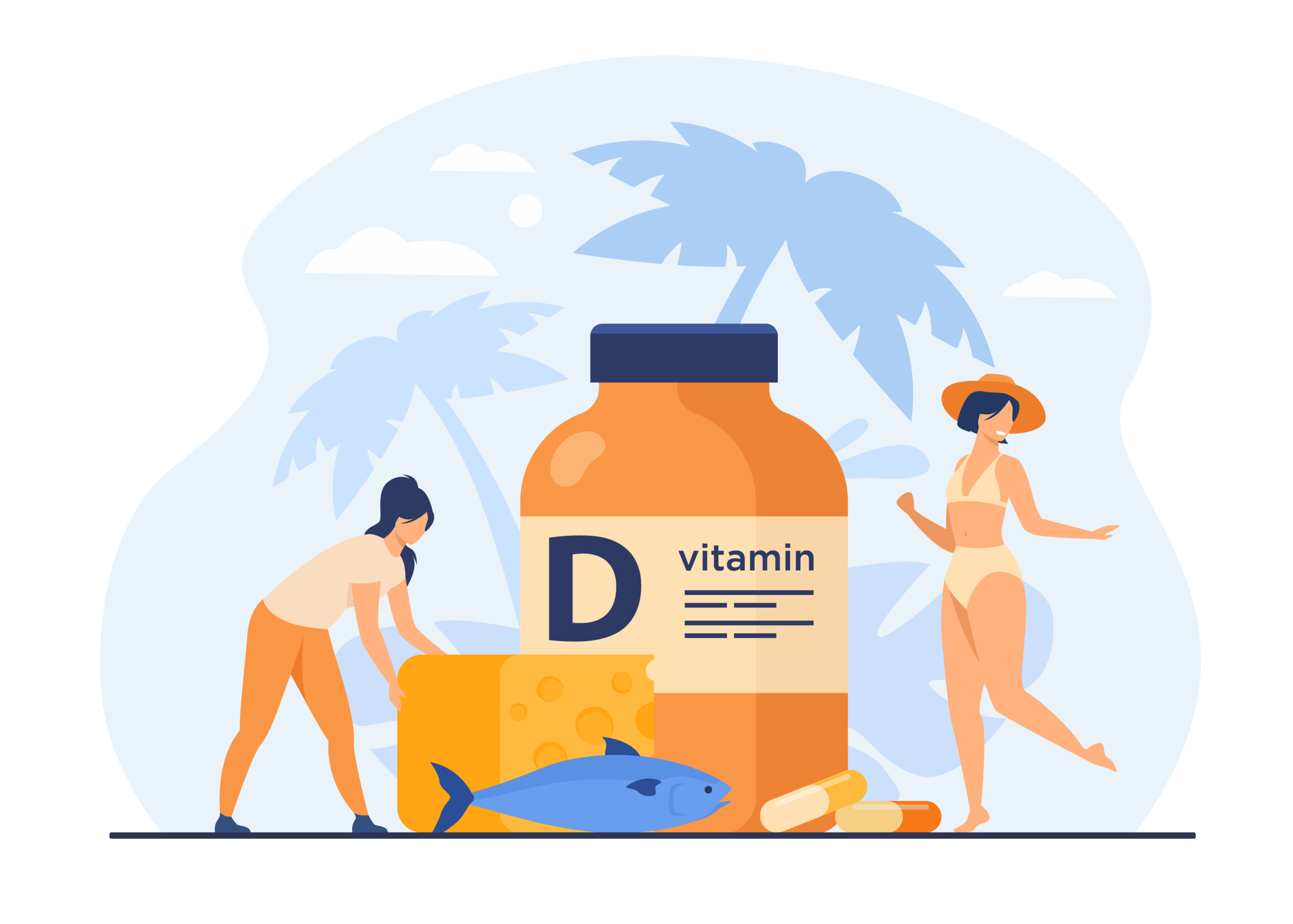Photodynamic therapy is an excellent treatment that we have been using for many years in dermatology. It is useful for the prevention of skin cancer in people with photodamage and actinic keratosis (cancerization field) and also to improve photoaging.
My name is Sebastian Podlipnik and I am a dermatologist at the skin cancer unit of the Hospital Clínic de Barcelona. During my years of experience, I have treated hundreds of patients with skin cancer and I continue to promote preventive behaviors to reduce its incidence. That is why minimally invasive treatments such as photodynamic therapy can help us to improve the quality of life of my patients.
What is photodynamic therapy?
Photodynamic therapy is a non-invasive treatment that requires a photosensitizing cream (a chemical compound that is activated by light) to be used on the area to be treated and a source of red or blue light that will activate this photosensitizing compound and will destroy only the abnormal (pre-cancerous) cells, but without affecting the surrounding healthy tissue. In other words, it is a very specific treatment to eliminate the abnormal cells in the photoexposed areas.
It is approved and used mainly in dermatology to treat:
- Actinic keratosis (precancerous) (Luo et al., 2024).
- Superficial basal cell carcinoma and nodular carcinoma (Collier et al., 2020)
- Squamous carcinoma in situ (Bowen's disease)
- Photoaging and skin rejuvenation (Tierney et al., 2009)

Patient who has been directly exposed to the sun all his life due to his work. Since a few years ago he notices the appearance of many "scratchy red spots" on the scalp and forehead. In this case they correspond to multiple actinic keratoses that may predispose this patient to develop skin cancer.
How effective is photodynamic therapy?
Photodynamic therapy is a highly effective treatment for precancerous lesions such as actinic keratosis with elimination rates of 70% to 90% after a single session, according to different studies. It has also been shown to be effective in the treatment of superficial basal cell carcinoma and in skin rejuvenation, as it improves skin quality by stimulating collagen production. Combination with technologies such as fractional CO2 laser can further enhance its efficacy by improving the penetration of the photosensitizer.
How is photodynamic therapy applied?
Although there are several modalities to perform photodynamic therapy I will explain step by step the conventional way. Later I will also briefly discuss a second modality that we apply today called "daylight photodynamic therapy".
1- Preparation of the area to be treated
Depending on each case we will prepare the area a few days before applying photodynamic therapy. In the case of patients with cancerization field and many hypertrophic actinic keratoses (very crusty or scabby), we will recommend using a keratolytic cream to clean the affected area a little. In this way we will achieve that the photosensitizer has better penetration into the skin and can reach the layers of the epidermis that we need to treat.Quote
2- Application of the cream with or without CO2 laser
Already in the day of the consultation, the patient will be scheduled for the application of the photosensitizing cream. (Methyl aminolevulinate [MAL, Metvix®] or 5-aminolevulinate [ALA, Ameluz®] available in Spain).
Depending on each case, we can simply apply the cream or also apply a fractionated CO2 laser that will allow us to make channels in the skin, a concept known as drug delivery. This is the method I use the most in my practice in Barcelona, Spain.
Drug delivery means that we use fractionated CO2 laser that creates microchannels in the epidermis, allowing the photosensitizer to penetrate deeper and more evenly into the skin. This technique improves treatment efficacy and can reduce drug incubation time. The following figure best exemplifies this concept.

Illustration showing the concept of drug delivery in the skin. With the CO2 laser, small channels are created in the epidermis through which the photosensitizer can enter in photodynamic therapy.
If we only apply the cream without the laser, absorption will be more superficial, which may be sufficient in thinner lesions or sensitive areas. In contrast, by combining PDT with fractional CO2 laser, we achieve more effective penetration, especially in thicker lesions or in patients with extensive skin damage.
3- Incubation
Depending on the photosensitizer chosen (MAL or ALA) and whether we perform CO2 lasers beforehand to create microchannels in the skin. it will take 1-3 hours for the drug to reach the affected skin cells. and the photosensitizer binds to these cells. During this time, the patient should avoid direct exposure to light to prevent premature activation of the drug.
4- Application of LED light (photons)
After this wait, we will finally apply a source of light energy (high energy red light) that will deliver the necessary photons to activate the photosensitizing molecules and selectively destroy the pre-cancerous or sun-damaged cells.

When red light strikes the treated skin, the previously absorbed photosensitizer generates reactive oxygen species (ROS), which causes selective destruction of the affected cells without damaging healthy tissue. Red light (generally 630-635 nm) is ideal for photosensitizer activation, as it efficiently penetrates the skin without generating excessive thermal damage.
What other photodynamic therapy modalities are available?
I have already told you about two forms of photodynamic therapy, conventional and photodynamic therapy combined with CO2 laser. There is also a third form of photodynamic therapy known as "daylight"..
What is daylight photodynamic therapy?
Photodynamic therapy with natural light or daylight is a fairly simple modality that takes advantage of sunlight (instead of the red LED lamp) to activate the photosensitizing medication applied to the skin.
Unlike conventional lamp therapy, this modality is less painful, as drug activation occurs gradually with sun exposure over approximately 2 hours. Quote
What are the disadvantages of daylight photodynamic therapy?
The main disadvantages of daylight photodynamic therapy are that its efficacy depends on the intensity of sunlight, so it is not recommended on cloudy days or in winter, and that it can cause redness and flaking of the treated skin in the days following the procedure. Also, in some cases, the response to treatment may be slower compared to conventional lamp therapy.
Is photodynamic therapy painful and what effects will be seen in the following days?
Photodynamic therapy (PDT) can generate a burning or stinging sensation during the application of light, especially in the conventional modality with LED lamp, since the activation of the photosensitizer occurs intensely and rapidly. On the other hand, in PDT with natural light, drug activation is progressive, so the treatment is less painful.
After the session, it is normal for the skin to show redness, slight swelling and peeling in the following days, similar to a mild sunburn. In some cases, small scabs may appear on the treated areas, which is part of the skin regeneration process. These effects usually disappear in one or two weeks, leaving a renewed skin with better texture.
Frequently asked questions from patients
How many sessions do I need?
In most cases, one session is sufficient. However, an annual treatment is necessary to maintain the results.
Can I live a normal life after treatment?
Yes, but avoid sun exposure for 48 hours. There may be redness and mild peeling, but you can continue with your daily activities using sunscreen.
Is photodynamic therapy painful?
The LED lamp modality may cause burning or stinging, although we will use techniques to minimize this. The Daylight-PDT technique is less painful due to its gradual activation.
What care should I follow afterwards?
Apply moisturizer and sunscreen SPF 50+, avoid the sun and do not scratch the peeling skin. Recovery usually takes 7 to 10 days.






